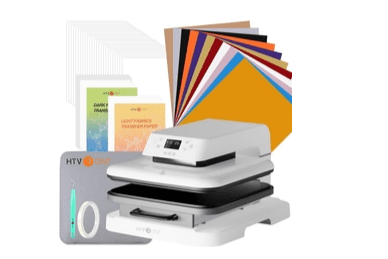Many businesses face slowdowns in their invoice-to-cash process because of manual data entry, lost invoices, errors, and delayed approvals. These issues not only cause frustration but also delay incoming payments and disrupt cash flow. Automating the invoicing process, reducing mistakes, and keeping information clear directly speeds up the entire invoice-to-cash cycle.
Other problems often include unclear invoice formats, missing data, duplicate invoices, and late payment follow-ups. By using the right tools and clear procedures, companies remove bottlenecks and get paid more quickly. As a result, teams spend less time chasing paperwork and more time focusing on work that matters.
Key Factors Slowing Down Your Invoice-to-Cash Process
Errors, delays, and poor communication often prevent smooth invoice-to-cash cycles. Each step in the process, from creating invoices to final collections, can introduce issues that waste time and create extra work.
Manual Data Entry and Data Errors
Manual data entry usually takes a lot of time and often leads to mistakes. Typing in invoice information, customer details, or payment amounts can result in small errors such as typos, wrong numbers, and missed fields. Even one incorrect digit may cause confusion, force corrections, and delay payment receipt.
Data errors also increase the risk of disputes between buyers and sellers. Customers who find problems in invoices may ask for corrections, which slows down the cash flow. Companies can avoid these issues by moving processes to automated systems, which reduce manual touchpoints and help safeguard accuracy.
Tables and built-in calculators available in many tools minimize the chance of mistakes. A modern payment solution for SaaS businesses removes the manual step entirely and helps secure prompt, precise billing.
Inefficient Payment Reminders and Late Payments
Slow or weak follow-ups allow customers to forget about unpaid invoices. Lack of automated reminders means businesses must remember and track each account, often letting overdue payments linger unnoticed.
Late payments harm cash flow and may strain relationships. To keep payments on schedule, firms should use digital tools to send gentle nudges right after invoices go unpaid. Automated systems that create clear reminders remove the need for manual outreach.
Solutions that support multiple payment methods also help customers pay sooner. Using an all-in-one platform with diverse payment options, like All-in-One Payment Platform & Solutions, streamlines the experience and often encourages faster settlement.
Complex or Unclear Invoices
Confusing invoices lead to questions and delays. Invoices with missing details, unclear item descriptions, or hard-to-read layouts can slow down the approval process on the buyer’s side. Recipients often put aside unclear bills while waiting for corrections or more information.
To speed up payments, invoices should include every line item, tax, due date, and payment method in a simple, direct format. Bullet points and tables also help make key information easy to spot. Adding readable formats and consistent templates further reduces confusion and answers most customer questions up front.
Templates and invoice software with built-in formatting tools prevent omissions and help standardize content. This approach also cuts down on repeated back-and-forth with clients.
Approval and Collections Bottlenecks
Getting the right approvals before payments often adds weeks to processing timelines. Long approval chains or unclear authority create roadblocks that stall payment release.
Delays also appear during collections if staff keep track of accounts manually. Relying on spreadsheets or emails may slow follow-up on overdue balances. Faster processing requires a more direct workflow.
Automated systems route invoices to the right managers, keep everyone updated, and flag stalled accounts. Dashboards and alerts highlight invoices that need attention and keep the process moving at each stage. This removes guesswork and allows staff to focus on accounts that need the most immediate action.
Proven Solutions to Accelerate Invoice-to-Cash
Businesses experience delays in their invoice-to-cash cycle due to manual tasks, unclear communication, and slow payment processing. More companies now use digital systems and automation tools to reduce errors and improve cash flow.
Digitizing and Automating Invoicing
Digital invoicing creates cleaner records and minimizes paperwork. Instead of relying on manual entry, team members use automated invoicing software to send and track bills. This switch removes mistakes caused by copying information and speeds up billing cycles.
Automated tools issue invoices directly to customers in formats that work for their systems. Many systems also track delivery status and open rates, so businesses quickly spot issues like lost emails. Automatic data capture limits disputes over missing or mismatched details, which helps shorten the time spent on corrections.
A digital approach supports fast payment by making sure invoices reach the right contacts instantly. Templates, electronic signatures, and easy data retrieval further shrink delays. Digital tools help teams close out sales faster and with fewer headaches.
Implementing Automation Tools for Accounts Receivable
Automation tools take over repetitive parts of accounts receivable, such as tracking outstanding invoices, sending payment reminders, and applying payments. These systems update records as accounts get paid, which gives staff a clear, real-time view of outstanding balances.
To further reduce delays, automated tools assign tasks like sending follow-ups right after the due dates pass. Businesses also use cash application software to match payments to invoices without manual effort, cutting down on mistakes and confusion.
Automated alerts keep the accounts receivable team informed about unpaid amounts or flagged accounts. Staff then focus on solving problems rather than searching for missing information. Streamlining these areas supports stronger cash flow and more predictable revenue.
Optimizing Communication and Payment Collection Workflows
Efficient communication speeds up the payment process by removing uncertainty for both parties. Automated payment reminders go out before and after due dates, keeping the invoice top of mind for customers. This regular contact often leads to faster payments and fewer overdue accounts.
Besides reminders, setting up clear channels for dispute resolution reduces time spent resolving disagreements. Offering choices like payment portals, multiple payment methods, and instant receipts also helps customers pay more easily.
Regular updates on account status reassure customers and show attention to detail. Using multiple communication channels—such as email, SMS, and online dashboards—improves message reach. As a result, companies see smoother collections and fewer bottlenecks in the invoice-to-cash cycle.
Conclusion
Many businesses face slowdowns in their invoice-to-cash process because of manual data entry, delayed approvals, and a lack of standardization. Each of these issues can lead to late payments, errors, and extra costs.
Automation, clear approval workflows, and consistent invoice formats help companies collect payments faster and reduce mistakes. Better systems also support stronger cash flow and vendor relationships.
Regularly checking for delays and using centralized invoice tracking gives teams more control and visibility. By taking simple steps, businesses can shorten payment cycles and improve their financial health.








